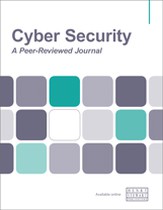Staying one step ahead of your adversaries: How to build a cyber threat intelligence team capable of delivering business value
Abstract
From enabling security teams to effectively respond to incidents to ensuring security investments are targeted on real-world risk, when effectively implemented, a cyber threat intelligence (CTI) team can deliver value against a broad range of operational and strategic requirements. While many organisations recognise the value CTI can provide, delivering on that value proposition is often more difficult. CTI is a data-driven process; however, building an effective CTI capability requires far more than effective data collection and exploitation. This paper contends that for many organisations the challenge in realising value from their CTI team is not a data problem, it is a communication problem. To address this challenge, security leaders need to look beyond the traditional intelligence life cycle and a consider a number of organisational factors which, taken together, provide a firm foundation to enable a CTI team to effectively communicate and influence stakeholders across the organisation. Specifically, security leaders should position the team strategically, populate that team with a diverse blend of skills, provide a clear direction and purpose, and implement a robust communication and influencing strategy. Together these measures improve the ability of the organisation to realise business value from CTI.
The full article is available to subscribers to the journal.
Author's Biography
Keith Nicholson is head of cyber threat operations at Her Majesty’s Revenue and Customs (HMRC) where he is responsible for threat intelligence, threat operations and threat hunting. Before joining HMRC Keith held a range of strategic and operational roles in the UK Government, including time spent in cyber risk management and cyber security strategy. With diverse experience across strategic and operational roles, Keith is equally comfortable discussing organisational strategy or researching the latest network intrusion techniques.
